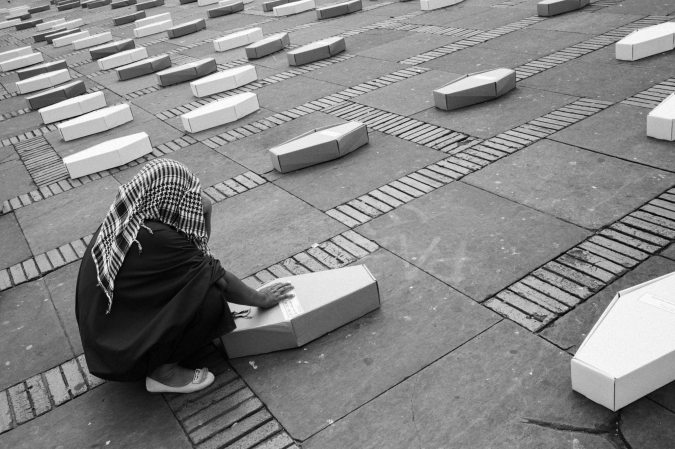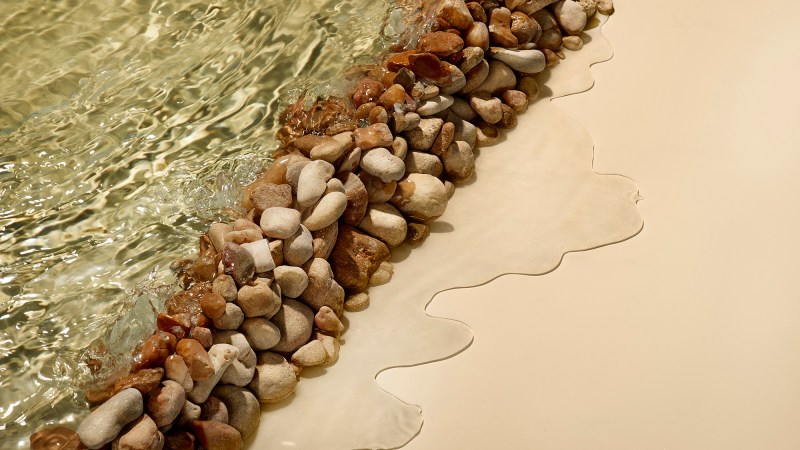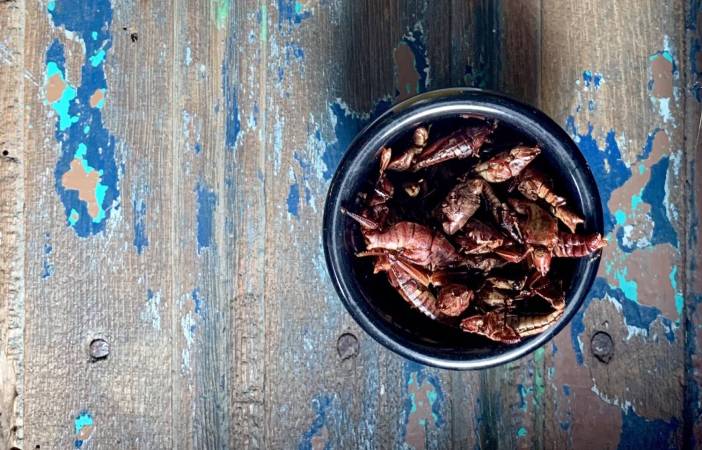


While traveling in Nigeria, Mustafah Abdulaziz came across bands of nomadic herdsmen. They protected their cattle with their lives, and guns. While grazing and herding, the different groups would stop to water their cattle at putrid drinking holes shared by local villages.
“They’re bad,” Abdulaziz said. “We’re talking about the worst form of a water resource for consumption.”
But even though these holes contained contaminated water, it was the water they had. Groups would bring their cattle, villages would drink their fill, and eventually, conflict would arise – violent conflict.
“The human capacity to fight over things, to fight pointlessly is well enunciated throughout our history,” Abdulaziz said. “And I think water is something that’s not pointless.”
From this instance and others in his travels, New York-born, Berlin-based Abdulaziz came to focus in on water, specifically how we use and abuse it. After more than four years photographing people’s interactions with water, an exhibition of his work “Water Stories” is now on display in the United States, at Brooklyn Bridge Park in New York City. It has traveled to the U.S. after exhibitions in Stockholm and London over the past year and a half.
Abdulaziz’s collection is an ongoing work meant to show the wide gamut of water issues that are felt throughout the world. Some of his photos show the effects of scarcity in Pakistan, where one photo shows the suffering of a child with diarrhea, a malady that is easily curable in the west, but can mean death for a child with no access to medication and water.
Other photos show the industry and subsequent pollution that have spilled into our waterways, and cargo ships that ply the Yangtze River in China. Elsewhere, he captures the droughts that are gripping parts of the globe.
The water issues are directly linked to humanity’s connection to the water, Abdulaziz said. It’s so engrained in all cultures – from swimming for enjoyment to shipping for economics.
“We come here and we have conversations and we stand and look at it. I don’t believe we go to deserts all cohesively and sit out in the middle of the desert.”
But it’s not just that cultural connection that has brought him to center on this theme. It’s the ability that his photos will cross any cultural or language boundaries and influence those to understand the importance of water.
“We destroy the less than one percent of what we have, and we cease to exist. For me, I cannot imagine a more important reality – oxygen, water, sunlight,” Abdulaziz said.
“The fact that people can walk around and not think of water as a topic, that implies a huge problem to me.”
His photography, he said, have the “potential for us to see the better versions of ourselves.”
The “Water Stories” exhibition is at Photoville, Brooklyn Bridge Park in New York until October 12, but fifteen photos from his collection can be seen below.




































